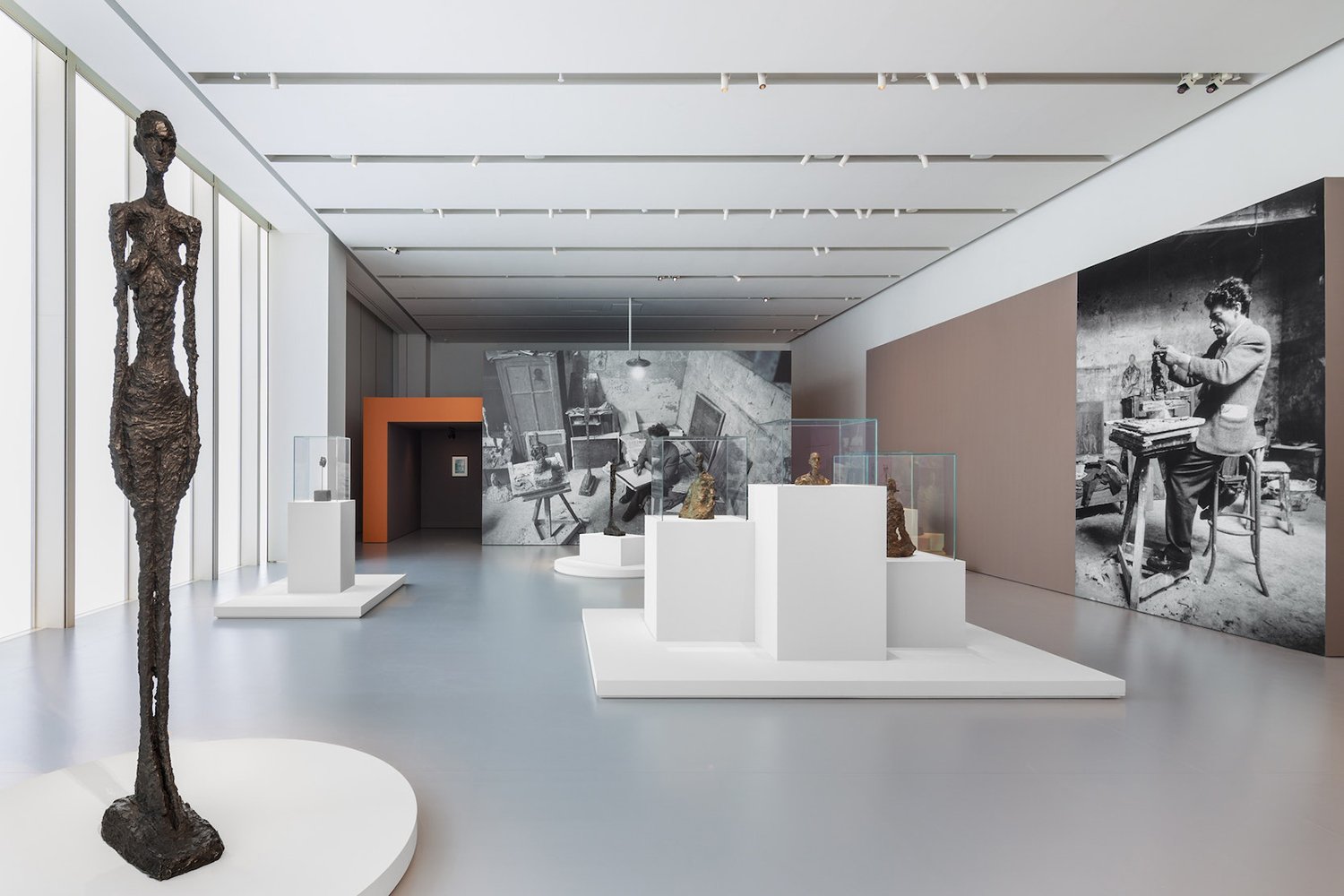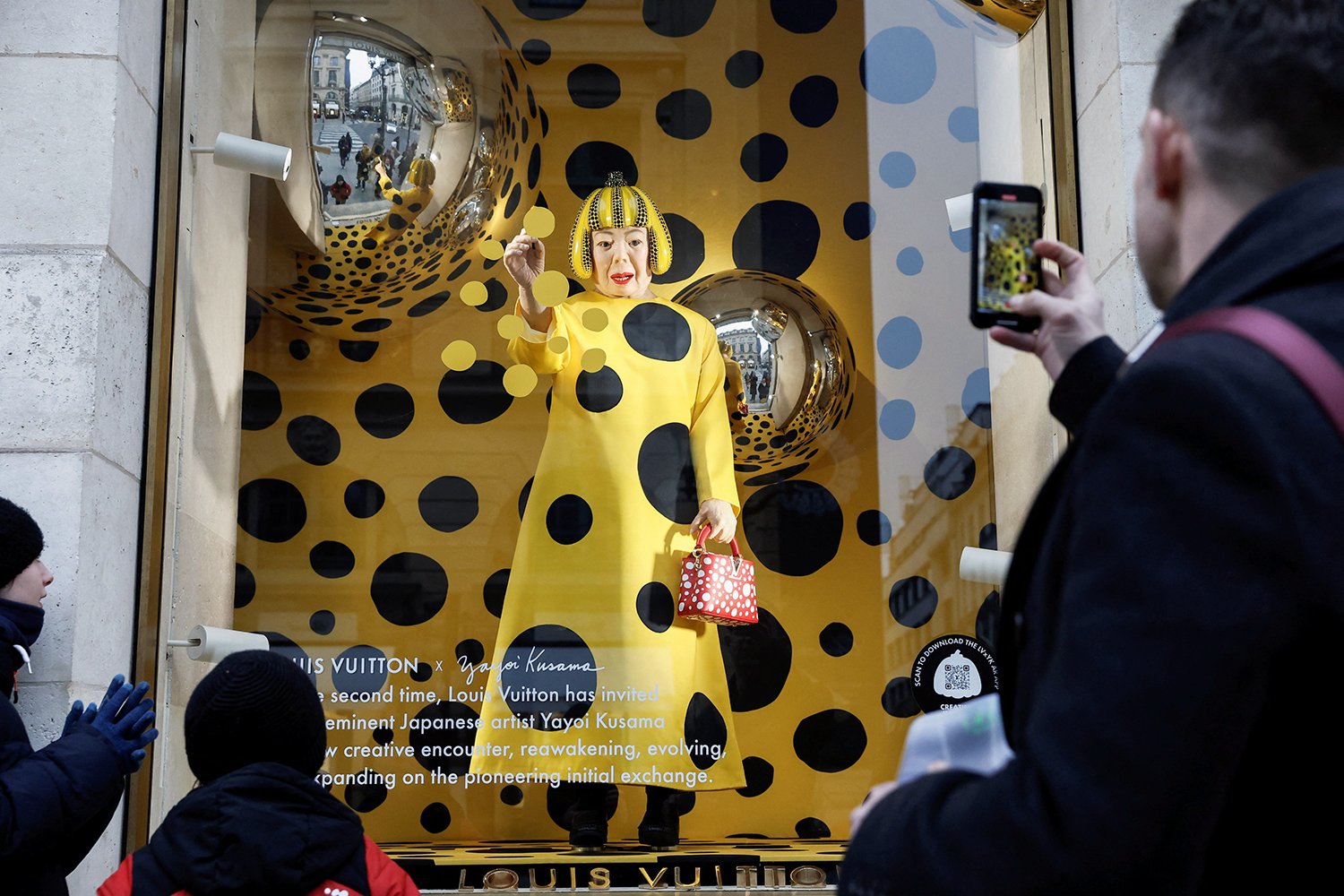Exhibition Review: Alberto Giacometti at Espace Louis Vuitton Osaka

Giacometti’s obsession with death and sex finds new potency in the 21st century.
Cover photo: Installation view of Fondation Louis Vuitton’s collection of Alberto Giacometti at the Espace Louis Vuitton Osaka, with Tall Woman II (Grande femme II) on the left, Osaka City, Osaka Prefecture, Japan (2023). Photo by Jérémie Souteyrat and via Louis Vuitton.
★★★★★
WARNING: This article includes topics of war, death, and sex.
Intro
Swiss artist Alberto Giacometti is consistently praised as one of the most important sculptors of the 20th century. Holding the current titles for first, second, and third most expensive sculptures ever sold, he is an undisputed auction favorite. And yet, despite all this, I have simply never liked his work.
Giacometti’s lean figures are grotesque, as if “simultaneously living and dead,” with a texture scarred and twisted like the bark of knotted trees. At museums, Giacometti is one of the few artists I avoid.
I had assumed that I simply lacked the maturity or insight to truly appreciate his talent, so I was thrilled to learn that Louis Vuitton was set to host an exhibition of his masterpieces at the fashion house’s Osaka gallery. I thought, now is my chance to reevaluate my opinion of the sculptor.
Just seven of Giacometti’s sculptures are on display; while the 1950 work Falling Man (L’homme qui chavire) was initially advertised, unfortunately it is not included. Though small, the collection is truly impressive, representing the best of Giacometti’s career, summed in his most frequent subjects, “the walking man; the standing, nude woman; and the bust”.
After my visit, I realize that I don’t like Giacometti because I dislike his work; just the opposite, it’s precisely because I find his hideous art so compelling.
Death & Existentialism
Giacometti was born in Borgonovo, Switzerland, in 1901, just at the start of the 20th century, an era that would come to know two of the greatest wars in human history. He moved to Paris in 1922, where he would remain for the rest of his life, with the exception of his retreat to Switzerland amidst World War II, from 1942 to 1945.
Giacometti’s work is frequently described in terms of ‘intensity’ as he possessed an incredible ability to render bronze sick, weak, and brittle. With his emaciated waifs seemingly awash in agony and horror, many critics analyze Giacometti’s figures as digestions of power-war trauma.
While not specifically inspired by war, Giacometti’s art is rooted in death. At just twenty-years-old, he stayed by the bedside of his elderly travel companion, Peter van Meurs, watching the ill man pass away. Observing the transition from life to death was a deeply affecting experience. His own creations occupy this space between being and non-being, with silhouettes so thin they barely exist.
Giacometti was again confronted by death with the passing of his studio neighbor, Tonio Pototsching. Giacometti recalled, “I saw him dead, with … his head thrown back and his mouth open... Standing motionless by the bed, I looked at the head, which had become an object, an insignificant, measurable, little box.” The resulting work Head on a rod (Tête sur tige) is the most agonizing of Giacometti's career, exploring man as pure mass devoid of soul.
Giacometti’s more common figures, whittled thin, are read as modern icons of solitude and anxiety, an idea reinforced by their presentation here. Louis Vuitton’s exhibition space is quite somber, rendered in muted grays, with a few choice pops of the brand’s signature orange saffron. With their solemn posture, the elongated statues echo the stillness of the gallery guards.
Because he was friends with famous philosophers, Giacometti’s oeuvre is often framed through the lens of Existentialism. Inspired by atheism, this worldview centers the intrinsic freedom, autonomy, and responsibility of humans as individuals.
Catherine Grenier, Director of the Annette and Alberto Giacometti Foundation in Paris, says, “what’s distinctive about him is that he wasn’t creating generals on horseback or Greek gods — nothing heroic.” Instead, he was depicting common man. Critic Lara Feigel lauds the “humility implicit in the striving [figures].”
His last surviving model, Paola Carola, argued, “All these interpretations of his work as symbolising human loneliness or alienation are too simplistic, taking no account of their truly unique nature.”
Perfectionism
Jean-Paul Sartre himself observed Giacometti was cursed with a different torment: perfectionism. His figures are not only depictions of suffering but creations of suffering. According to friends, Giacometti’s art was the product of a deep and unrelenting anguish. He was plagued by a fundamental dissatisfaction that physically manifested itself into his creations. Noted Sarte, “He breaks everything, and begins all over again.”
The Japanese philosopher Isaku Yanaihara (矢内原 伊作), friend and model, wrote that Giacometti never considered a single one of his works finished, suggesting he could only just surrender to the incompletion of his torturous process. These are the pitiful creations of a perfectionist god plagued by self-doubt.
In 1962, when Giacometti was chosen to represent Switzerland at the Venice Biennale, he suddenly began painting his bronze sculptures after installation. In Ernst Scheidegger’s 1966 documentary (on view at the exhibition) Giacometti accepts, “It’s true that I’m rarely happy.”
The key to understanding Giacometti’s sculpture is not through matter, but through void. He worked in a state of constant reduction, subtracting from his figures — first rendered in clay or plaster — with such compulsion that most simply collapsed.
Giacometti “worked like a dog chewing a bone, restlessly nibbling away for hours until he broke through to the artistic marrow,” notes art writer C.B. Liddell. This ‘chewing’ is reflected in the eroded texture of his works. It was this obsessive mania, noted the anarchist novelist Jean Genet, that allowed Giacometti to “discover what will remain of man when all pretences have been removed.”
Perception
Upon his move to Paris, Giacometti first joined the ranks of dream-obsessed Surrealists, but he was expelled in 1935, devoting himself to the representation of live models. While interested in reality, Giacometti’s goal was never mimesis. “The photograph exists and that’s all there is to it,” he argued. Instead he desired to depict his own reality, one which seemed to taunt and elude him.
Associate professor and curator Mina Lee (李 美那) argues it was Yanaihara who inspired Giacometti to “look at art in a more symbolic way.” As Liddell summarizes, he “switched from creating art as he saw it to creating art as he synthesised it or felt it in his mind.” The contemporary British sculptor Antony Gormley says Giacometti’s work expresses “the very process of looking.”
Giacometti’s sculptures read as hauntings, wisps of memories, evaporating into air. I find it so difficult to focus my eyes upon them. Their faces seem to swirl as I stare, like a kind of hypnosis. Their vacant eyes stare past into the abyss. Monochromatic and misshapen, they evade, no, resist perception.
“These figures, who are wholly and all at once what they are, do not permit one to study them,” wrote Sarte. The artist-critic Jonathan Keats describes this quality as “the unknowability of strangers.” Three years into the COVID-19 pandemic, it’s become almost bizarre — even intimate — to see a stranger’s face.
Eroticism
Unsurprisingly, the show neglects the psychosexual readings of Giacometti’s work, who, since adolescence, suffered from impotence. “I have always felt very inadequate, sexually speaking,” admitted Giacometti. As a young man, he confessed to fantasies of rape and murder. He was a frequent patron of Parisian brothels, only ever finding pleasure between the “strange, long, thin and tapering legs” of “goddesses” (sex-workers).
Especially here in Osaka, it’s disappointing the exhibition omits mention of Yanaihara, as the Japanese intellectual looms large in Giacometti’s life and legacy. Outside Giacometti’s immediate family, Yanaihara was his favorite model, in whom he found endless fascination. He was the only person willing to pose for hours on end; “it was as if [Giacometti] were caressing me with his eyes.”
Yanaihara also enjoyed an affair with Giacometti’s wife Annette, a tryst encouraged by the artist himself, who paid for Yanaihara’s annual summer trips to France. This public ménage à trois resulted in a fruitful period, totalling two busts and twenty-two portraits, bestowed “with a rare measure of intimacy,” as noted biographer James Lord.
“Nothing is more foreign to me than jealousy,” Giacometti told Yanaihara. “To respect Annette’s freedom is to love her, no?” The delicate relationship fell apart in 1961, after an impatient Annette found herself a new sexual partner, effectively terminating the couple’s relationship with Yanaihara. Giacometti satisfied himself with a young sex-worker known as Caroline.
Autonomy
Many critics, including arts scholar Rada Georgieva, find “misogynist undertones” in Giacometti’s art; his men are generally sexless but dynamic, caught in motion, while his women are rendered as sexualized totems, like towering obstacles to be overcome or objects waiting to be acted upon.
The subject of autonomy is especially sensitive in “male-dominated” Japan, which ranked a devastatingly low 116th in the 2022 Global Gender Gap Report.
In a country where upskirting — the act of taking secret photographs of women’s underwear — remains a growing trend, the #MeToo movement is widely considered a failure. Japan has no national law against nonconsensual photography and conversations about rape are generally taboo.
Giacometti’s work “is about respecting the existence of things outside ourselves,” argued model Carola, revealing, “He enabled me to know myself better, to gain access to my memories and feelings. He gave me back to myself.”
While an art gallery is perhaps an uncomfortable setting for discussions of consent and gender equality, such concepts must be broached somewhere. If curators and arts-patrons alike continue to appreciate icons of yesteryear, we should challenge ourselves to interrogate what these artists have left for us to consume, marinated in ideas we may no longer accept.
Final Verdict
Giacometti’s obsession with death is especially potent today, three years into a global pandemic which has taken the lives of 6.9 million people worldwide. And while the gallery space is imperfect — with inconsistent lighting and inadequate seating — the presented works represent Giacometti at his very best, appropriate for a nation which values quality over quantity. It’s perfect for visitors both obsessed and unfamiliar with the artist. To enjoy a collection of this caliber for free is a rare opportunity. It’s certainly worth a visit.
Access
Alberto Giacometti is on view from February 23rd to June 25th, 2023, at Louis Vuitton Maison Osaka Midosuji 5F, 2-8-16, Shinsaibashi-suji, Chuo-ku, Osaka 542-0085, with free admission to the public. Open Monday through Saturday, 12:00 to 20:00.





